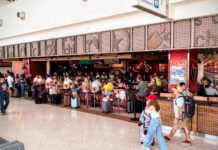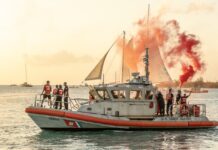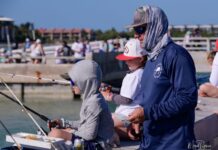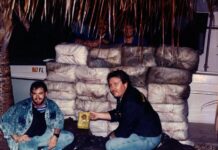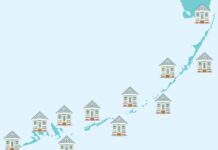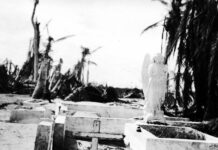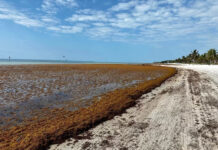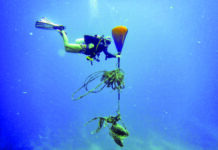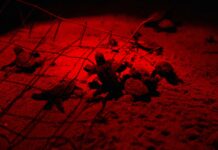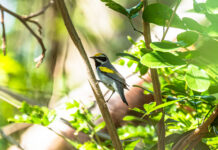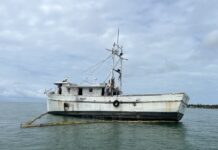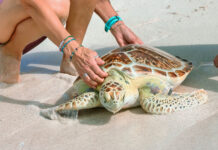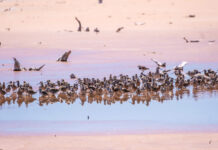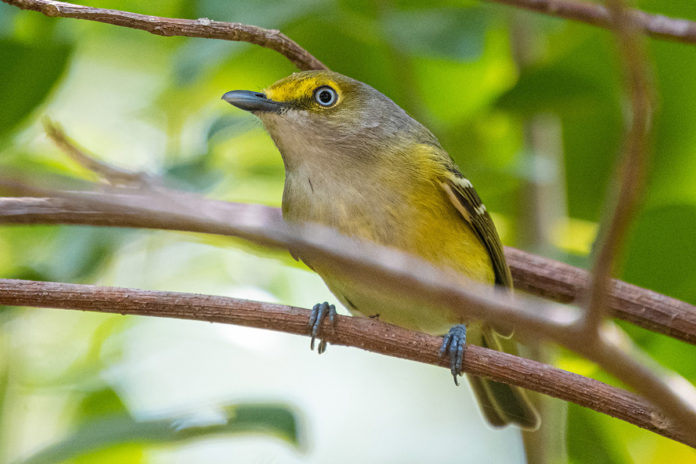
You want to see signs of rain when you wake — puddles that weren’t there the night before, maybe wet streets. You don’t want it to have rained too early in the evening. Sometime between 11 p.m. and 3 a.m. is best, though later still works.
You want the birds that left Cuba and parts south just after sunset to have hit the weather over the Keys, to know their migration was done for the night, and to set down.
You want it to rain enough that, after the birds have given up on the evening’s long-haul flight, they don’t keep moving forward on short hops.
That’s how it works in my head, at least. The birds may not feel the same way.
From mid-April to mid-May is prime migration time on planet Earth. Hundreds of millions of birds are moving themselves across the planet, trying to get from their winter habitat to their breeding habitat to secure real estate, find a mate (could be their steady from last year, could be someone new), build a nest and hatch some chicks.
In the New World, some of these birds take the land route from South America, up through Mexico, to California, Texas, Arizona, dispersing across the continent, some going as far as Alaska, the Northwest Territories and the Arctic. But some veer off from the Yucatan and shoot out over the Gulf of Mexico, aiming for Louisiana and Mississippi. If the wind is blowing hard from the north or from the northwest, some of those birds get pushed east and, if they’re lucky, end up here.
Nobody really knows what percentage of ill-fated birds are doomed to end up in the ocean – 10%? 50%? — although there are people with strong opinions and solid theories as to why they are right.
Most of the birds we see here start in Cuba. They may have island hopped up from South America or the Southern Caribbean islands recently, or they may have wintered in Jamaica, Puerto Rico or even Cuba. But they gather up most visibly in Cuba.
Every night just after sunset, masses of birds take off from our southernmost neighbor and fly across the Florida Straits. If the weather is clear, a few come down, but most of them keep going, flying as far as they can up the Florida Peninsula, the risks greatly reduced once they clear the ocean.
But if the weather is bad, many will come down in Key West and the Keys. Other than the geographical postage stamp that is the Dry Tortugas, we’re the first place of safety.
They guide themselves by the stars or by dead reckoning or by the feel of the earth’s magnetic field pulling at the iron deposits in their skulls, and sometimes by a combination of all those things.
In the earliest days of radar, blips appeared on the screens that were neither weather nor airplanes. In tribute to their ethereal and undefined nature, technicians just called them angels, letting the mystery be.
Eventually they realized they were mostly birds, though also sometimes insect swarms or dust storms. With the birds, it was often mass migration in action.
In the 1990s the NEXRAD system came along – 160 highly refined doppler radar stations spread around the country, with data feeds that could be accessed online. The science got a lot more precise.
You can now track migrating birds on radar. Occasionally the Key West bureau of the National Weather Service will post an animated image of it on their Facebook page — a cloud of birds forming over Cuba just after sunset, and then moving en masse across the Straits.
A few websites and blogs offer good tutorials on how to read the radar yourself. (See markhedden.com/radar for links.)
A few years ago, the National Audubon Society, the Cornell Lab of Ornithology, and several other scientific entities created BirdCast (birdcast.info) that linked the data from NEXRAD stations across the country to show real-time radar images of bird migration and predict where the birds might travel. At 12:55 a.m. the other evening, an estimated 244.8 million birds were in flight across the country.
“Whoa.” I said aloud, though no one was in the room.
If you enter your town or zip code into the BirdCast site, it will predict how busy the migration is likely to be in your area for the next three nights.
While we’re getting to the point of being able to predict when, where, and how many birds will migrate, it is still essentially a grab bag of which species will migrate when.
Mostly you’ll see wood warblers — small, often-brightly colored songbirds that flit about on the ground and in the bushes and trees. (There are 39 species of warblers that have been seen in the Keys, so I’m not going to list them.) But there are also plenty of swallows, thrushes, buntings, vireos, cuckoos and the occasional Caribbean rarity, such as a Bahama mockingbird or Western spindalis.
The technology is great, but there are few things better in the birding world than waking up to a wet sidewalk and heading to a place like Fort Zach or Indigenous Park, and letting yourself be gobsmacked by the wonder of it all. There’s no substitute for ground truthing.
